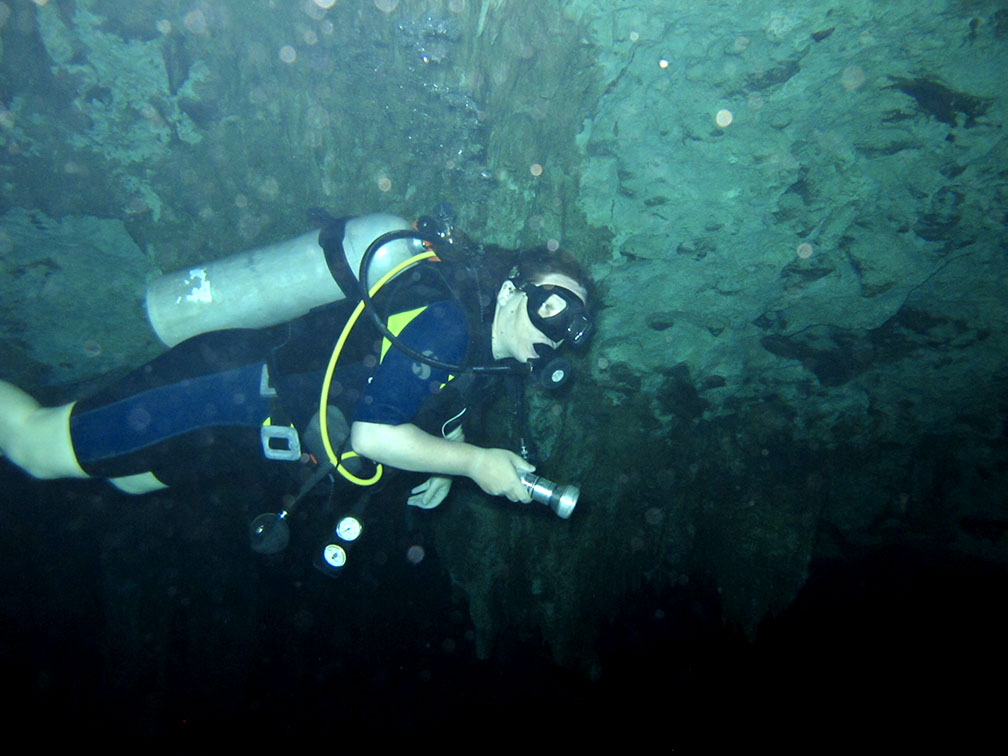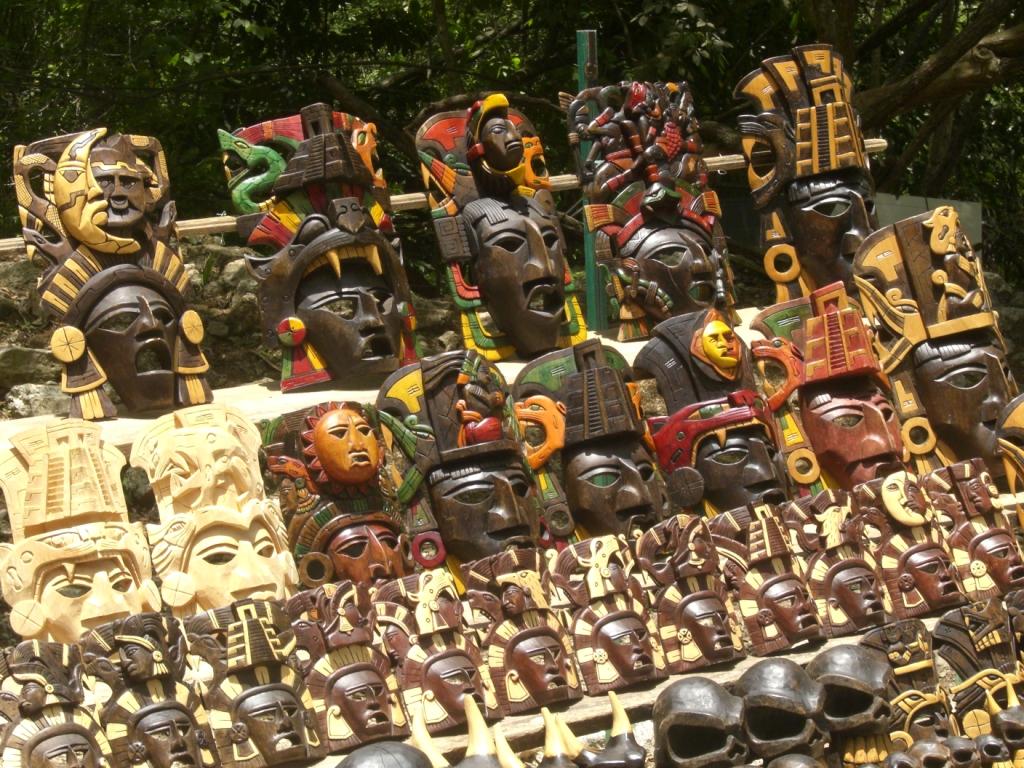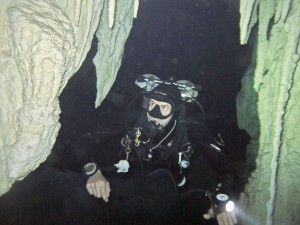
If you are a Harry Potter fan, try to picture these three scenes: From Book 2, where the Phoenix flies Harry and his friends out of the Chamber of Secrets. From Book 4, where Harry swims through the mysterious depths of the lake. And from Book 6, where Harry and Dumbledore make their way through the cavern where Voldemort has hidden the Horcrux. Now roll all three together and you’ll have an idea of what it’s like to scuba dive in a Mexican cenote.
For you non-Potter fans, I invite you to imagine a cave black as ink, filled with water clear as air. Now imagine yourself weightless, like an astronaut, except without the mobility-limiting space-suit. Shine a flashlight to light your way through the maze of stalactites and stalagmites. Float. Then start to fly.
Magic.
In Your Bucket Because….
- This is a totally different type of diving experience.
- The visibility is like swimming through crystal clear mountain air.
- Good for: Divers of most levels (if they have confidence, buoyancy control, and a sense of adventure) and families with snorkelers.
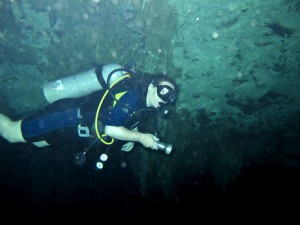
The word “cenote” (se – NO – tay) is derived from the Mayan word, “dzonot” which means sacred well. At the height of the Mayan civilization, cities like Tulum and Chichen Itza, were built near cenotes. Some of these springs were sacred sites used for sacrifices. Some provided ordinary drinking water.
Cenotes are basically what is left when the limestone roof of an underwater flooded cave collapses. Brought out of the darkness of the underworld into the light of day, the cenotes then become surface entrances to the rest of the cave system. Cenotes and the interconnected passages between them run underneath the Yucatan peninsula — a whole underworld of underwater geological marvels. Sometimes it is possible to dive from one cenote to another, although such adventures require special certification.
Thought to have been created by a meteor that fell somewhere in the Gulf, the cenotes are related to the freshwater springs of Florida. But unlike the springs in Florida, the cenotes began as dry limestone caves, meaning that stalagmites and stalactites, which can only form in dry cave environments, were able to form before the caves were flooded. Today, the caves and caverns are underwater — as are the stalactites and stalagmites that formed eons ago.
Caves and Caverns and Diving the Cenotes
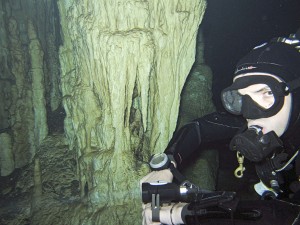
I began my exploration of this strange and wonderful underworld at Dos Ojos, one of the cenotes that has caverns that are diveable by certified open water divers without special cave training. It also has an extensive system of underground channels that are still being explored and mapped by certified cave divers. With miles of connected underwater systems, Dos Ojos is one of the longest underwater cave systems in the world. But it also offers a gentle introduction to cavern diving for newbies, with no currents and water so clear that visibility is as much as 250 feet.
There are two factors to be concerned with in cave or cavern diving: The first is accessibility to the surface. In some of the caves and caverns, there may be air between the surface of the water and the roof of the cave. In other caves and caverns, the water rises all the way to the cave roof, and coming to the surface will only mean that you bump your tank on the cave ceiling, without having access to air. Obviously, a cave where there is air between the water surface and the cave roof is safer than a cave where you do not have a direct line to the surface.
The second issue is light. Technically, the difference between cave and cavern diving has nothing to do with air, and everything to do with light: In a cavern, you can always see some light, even if it’s only a ghostly glow. In a cave, you are in utter darkness. Cave diving requires special certification (among other things, you learn to manipulate reels of rope that can lead you back to safety) or the supervising presence of a cave-certified instructor.
You won’t see much sea life in the cenotes: maybe a few seriously undersized catfish, the occasional blindfish, and handful of freshwater shrimp. There are, however, bats: The second dive at Dos Ojos took us into the Bat Cave, where we came to the surface in order to watch bats taking their daily siesta, comfortably ensconced in holes in the limestone. But the magic here is in the architecture, not the inhabitants. It’s also in the strange sense of weightlessness as you travel through the caverns, flying past formations and features that could as easily be from outer space.
Or, perhaps, a world of magic.
Practicalities
- Freshwater requires less weight: Figure about 6 pounds less than you use in salt water, assuming the same type of tank and wetsuit. Temperatures are a steady 77 degrees Fahrenheit year round, and a 3 mm shortie is generally sufficient.
- Buoyancy control (top and bottom) is critical: Limit fin movements, and keep your fins not only off the cavern floors, but at least a foot away from them, as the floors are very silty, and waving a fin too close to them can impact the visibility for hours. You’ll also want to be aware of where your tank is in relation to the stalagmites and stalactites: A careless bump can destroy a formation it took thousands of years to make.
- Akumal, near Tulum, is a dive center for the southern Riviera Maya, and can arrange both reef dives and cavern dives.
- The Dos Ojos caves are shallow: Both our dives barely touched 30 feet, allowing us to stay underwater almost indefinitely. Snorkeling is available for non-divers.
- This is probably not a great dive for divers who are claustrophobic, or who have limited night diving experience.
